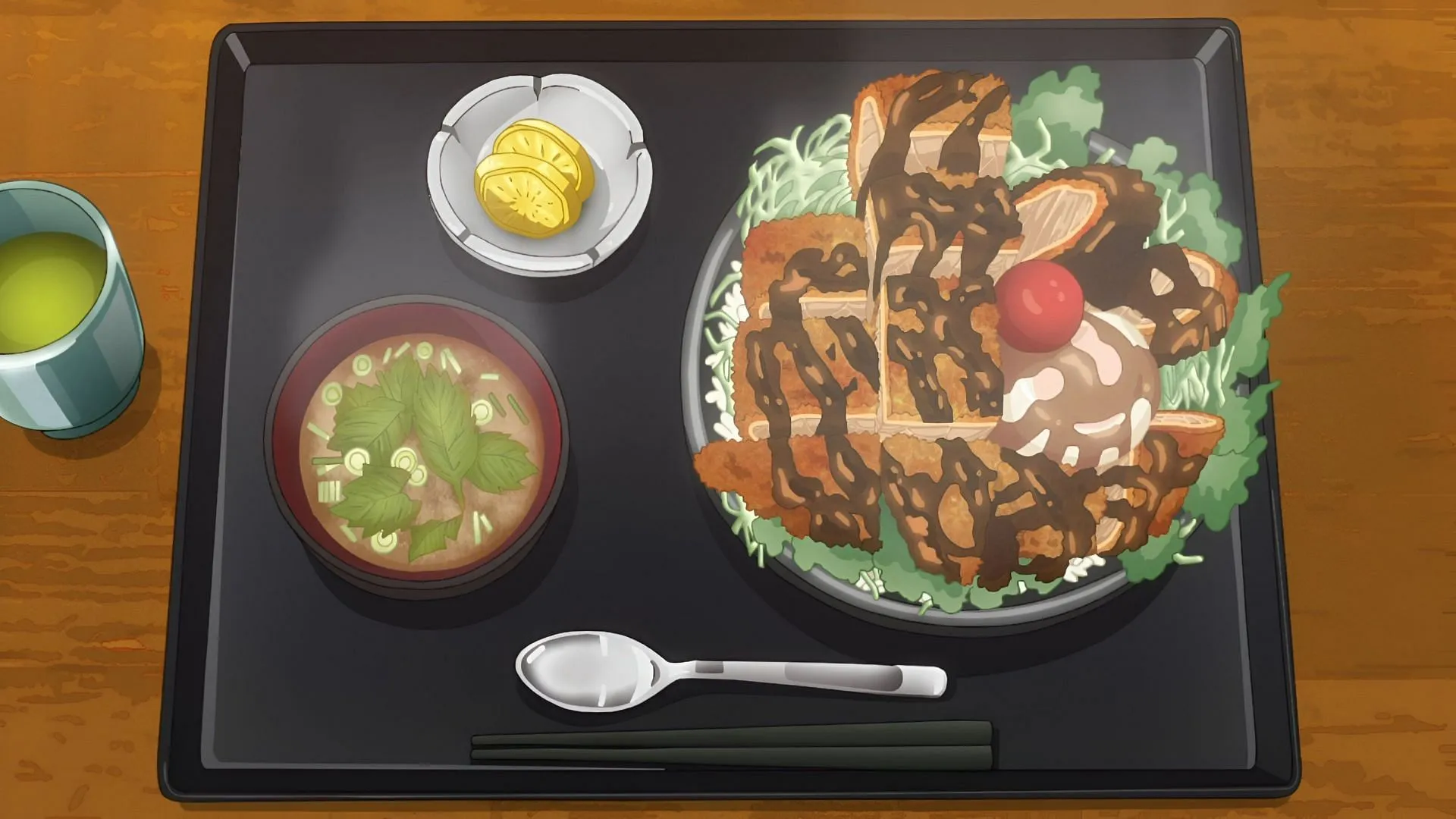Food for the Soul Episode 1, titled “Hibi wa Sugiredo Meshi Umashi,”introduces viewers to Kawai Mako, a timid university freshman adapting to life on her own. The series, crafted by Atto (known for the acclaimed “Non Non Biyori”) and brought to life by the esteemed animation studio P.A. Works, poignantly explores the theme of how food can forge human connections.
Under the guidance of directors Shinya Kawatsura and Yū Harumi, this inaugural episode elegantly emphasizes the narrative of fostering meaningful relationships through communal meals, helping to break down emotional barriers. With stunning visuals and authentic character development, the premiere lays the groundwork for a deeply emotional story about friendship and the comforting power of shared dining experiences.
Disclaimer: This article contains spoilers regarding the anime Food for the Soul.
Mako’s Culinary Passion and Social Challenges
Episode 1 commences with Mako observing Mokotaro prepare a no-cook Omurice in a Hokkaido egg shop, which sparks her inspiration to replicate the dish at home, reflecting her passion for cooking despite her introverted demeanor. However, it also reveals a significant aspect of Mako’s life: her deep social anxiety that prevents her from dining out alone. Each attempt to eat out results in retreat, as overwhelming fear grips her. Mako’s introspective thoughts reveal her transformation from an extrovert to someone who shies away from unfamiliar situations, grappling with the dread of failure and discomfort in social environments.
The Food Culture Research Club’s Ambitions

Within this episode, Mako encounters three fellow students—Shinon, Kurea, and Higa—who are determined to launch a Food Culture Research Club but are hindered by their inability to recruit a fourth member. Their amusing attempts to influence the administration with gold-colored origami paper as a bribe result in comedic failure. While having lunch in a secluded area, they happen to spot Mako.
Recognizing her as an old classmate, Shinon’s warm invitation to join their club is met with Mako’s polite refusal—an emotionally significant moment that encapsulates her struggles with shyness and social acceptance.
Chance Encounter at the Katsudon Shop
Later in the episode, viewers follow Mako to her part-time job at a dumpling shop, where she finds herself distracted by her thoughts about her interaction with Shinon. On her way home, she passes by a katsudon restaurant she has longed to visit, but her anxiety holds her back from entering.
In a pivotal moment, Mako encounters Kurea, who works at her family’s restaurant. Initially frozen with anxiety, she is drawn in by the tantalizing aroma of freshly cooked katsudon when Kurea extends a warm invitation to step inside.
Overcoming Personal Barriers

A highlight of the episode occurs when Mako nearly misses the restaurant’s signature sauced katsudon. Fortunately, Kurea generously offers her staff meal, an act that enriches the scene through beautifully animated cooking sequences. As Mako savors the dish, she begins to open up emotionally, prompting Kurea to share that Shinon regretted not getting Mako’s contact information. This conversation encourages Mako to reconsider her anxieties about social interactions, and the episode concludes with her sending a text to Shinon about the club—a hopeful step in her journey toward connection through her love for food.
Conclusion
The premiere episode of Food for the Soul successfully establishes foundational character dynamics while highlighting the poignant emotional themes that define the series. Mako perceives food not merely as sustenance, but as a transformative vehicle that encourages bravery, connection, and personal growth.
P.A. Works elevates the storytelling experience with stunning visual artistry, while Atto’s character development provides the emotional core necessary for a compelling narrative. This episode captures the essence of social anxiety, showcasing shared meals as powerful instruments of bonding, setting the stage for a touching slice-of-life anime that connects deeply with audiences on both emotional and intellectual levels.


